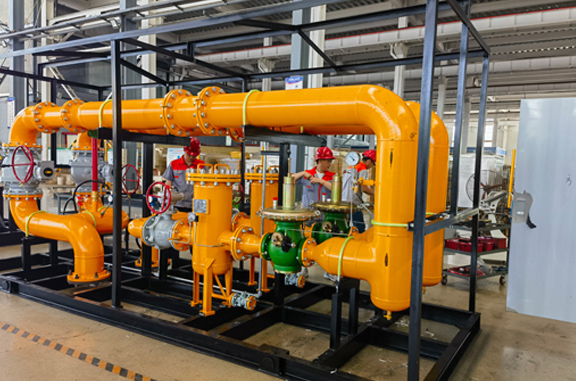
Jul . 26, 2024 05:26
Back to list
Understanding Pressure Reducing Valves and Their Importance in Fluid Control Systems
Understanding Pressure Reducers The Key to Safe and Efficient Gas Supply
Pressure reducers, also known as pressure regulators, play a crucial role in various applications involving gas supply systems. Their primary function is to reduce and maintain a consistent pressure from a high-pressure source, ensuring safe and efficient operation of connected equipment. This article explores the importance of pressure reducers, their working principles, applications, and benefits.
What is a Pressure Reducer?
A pressure reducer is a mechanical device designed to decrease the pressure of gas or liquid from a high level to a lower, more manageable level. It can regulate the flow and maintain a stable output pressure, regardless of fluctuations in the input pressure. This function is essential in many industries, including healthcare, manufacturing, and energy, where precise pressure control is necessary.
Working Principle
The fundamental working principle of a pressure reducer is relatively straightforward. It consists of an inlet and an outlet, along with an adjustable spring mechanism. When high-pressure gas enters the reducer, it pushes against a diaphragm connected to the spring. The diaphragm moves, adjusting the size of the outlet opening, which controls the flow of gas exiting the reducer. If the output pressure rises above a set limit, the diaphragm moves to decrease the opening size, thus reducing the flow and maintaining a stable pressure.
Applications
Pressure reducers are widely used in various sectors
.
2. Industrial Manufacturing processes often require gases like natural gas or acetylene to be supplied at specific pressures. Pressure reducers ensure these gases are delivered at the correct pressure for safe and efficient operation of machinery.
مخفض الضغط

3. Energy In the energy sector, pressure reducers manage the flow of gas in pipelines, maintaining a steady pressure that is crucial for combustion and other processes.
4. Laboratories Many scientific experiments require the use of gases under controlled conditions. Pressure reducers provide the necessary stability in gas supply, allowing for accurate and repeatable results.
Benefits of Using Pressure Reducers
Using pressure reducers offers several advantages
- Safety By maintaining a consistent output pressure, pressure reducers prevent potential hazards associated with over-pressurization. This is critical in applications where gases are flammable or toxic.
- Efficiency Regulators optimize the performance of gas-consuming equipment. By ensuring that devices receive the appropriate pressure, they operate more efficiently and have a longer service life.
- Cost-Effectiveness Implementing pressure reducers can lead to cost savings. Efficient gas supply reduces waste, and less energy consumption translates to lower operational costs.
- Versatility Pressure reducers come in various sizes and designs, allowing them to be used in a wide range of applications, from small laboratory setups to large industrial systems.
Conclusion
In summary, pressure reducers are essential components of gas supply systems across various industries. They ensure safety, efficiency, and cost-effectiveness by managing and regulating gas pressure. With their wide-ranging applications and critical importance in maintaining operational integrity, pressure reducers are indeed the unsung heroes of modern gas management systems. As advancements in technology continue, we can expect pressure reducing systems to evolve, incorporating smart features and improved efficiency for even greater impact in the industries they serve.
Latest news
-
Safety Valve Spring-Loaded Design Overpressure ProtectionNewsJul.25,2025
-
Precision Voltage Regulator AC5 Accuracy Grade PerformanceNewsJul.25,2025
-
Natural Gas Pressure Regulating Skid Industrial Pipeline ApplicationsNewsJul.25,2025
-
Natural Gas Filter Stainless Steel Mesh Element DesignNewsJul.25,2025
-
Gas Pressure Regulator Valve Direct-Acting Spring-Loaded DesignNewsJul.25,2025
-
Decompression Equipment Multi-Stage Heat Exchange System DesignNewsJul.25,2025

